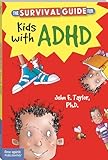- HubPages»
- Family and Parenting»
- Parenting Skills, Styles & Advice»
- Parenting Advice & Tips
One behavioral and one non behavioral (therapeutic) technique to use with students with ADHD.

Techniques to used to with students with ADHD
ADHD is a disability that presents itself in different forms. There is an inattentive, hyperactive and a combination of both types. Symptoms range from being withdrawn to always being in constant motion. Over the past ten years, the number of individuals diagnosed with the disability has grown rapidly; many experts often question the notion as to whether the increase is actually ADHD. One study believes that children act differently in different situations and places. For example, a child may sit calmly and watch his or her favorite show for one hour but not be able to sit for twenty minutes calmly in a classroom (Armstrong, 1996). More over those that are diagnosed early seems to lose the disability as they get older. According to Armstrong (1996), the assessments that are being used are not entirely accurate, some are very vague and offer little insight into the diagnosis made. As the dispute reigns, ADHD is still prevalent in some children if not most. ADHD can be treated two ways, through behavior and/or therapeutic techniques.
Behavioral Technique
One behavioral technique that teachers and parents can use when dealing with children with ADHD is a contingency- based approach (Hallahan, Kaufman & Pullen, 2009, pg. 244). This self management strategy allows children to self monitor their own behavior throughout the day. Based on how they behave, children will grade themselves. At the end of the day or week, depending on the teacher, the child will be assessed and it will be determined if the child did well or not. If a child does well, it is important for the teacher to reward the child in some way. Research as shown that children who are rewarded often behaved better than those who were not. A technique like this is good because it gives children the opportunity to be in control of themselves. If they behave well, they know that they will be directly rewarded, if they do not do so well, there is always a next opportunity to get it right. It gives the opportunity to self monitor and assesses their own actions. I think it’s important for teachers to be encouraging. Children may have good days and not so good ones, what matters are that they are given a chance to do better.
Non Behavioral or Therapeutic Technique
Another form of help that can be used to treat ADHD is the use of Psychostimulants (Hallahan, et. at, 2009). Psychostimulants are medicated drugs that are prescribed to those that are affected with ADHD. The drugs "activate neurological functioning" in the brain (Hallahan et. at., 2009, pg. 247). Common types of medications used are Ritalin, adderell, etc. Many of these drugs are effective in helping with ADHD however they also include many side effects. Ritalin has been highly criticized and had been known to have side effects such as insomnia, loss of appetite and headaches (Hallahan, et. at., 2009). It it important that parents consider the seriousness of taking these medications and the impact it might have on their children.
ADHD can be treated in various ways. Some prefer the use of behavioral techniques while others are solely dependent on medications. It really does depend on the individual. If a child can be solely treated without the use of medications then I say go for it. It minimizes all the side effects that are present when on medicines. Sadly behavioral strategies don't work for all and some children do require medication. Just like no two children are the same, no two case of ADHD are the same. Some students require more treatment than others. It all really depends on the severity of the case.
Armstrong, T. (February,1996). ADD: does it really exist?. American institute for learning and development.
Hallahan, D.P., Kauffman, J.M., Pullen, P.C. (2009) Exceptional learners: an introduction to special education. (11th ed.) Boston:Pearson











